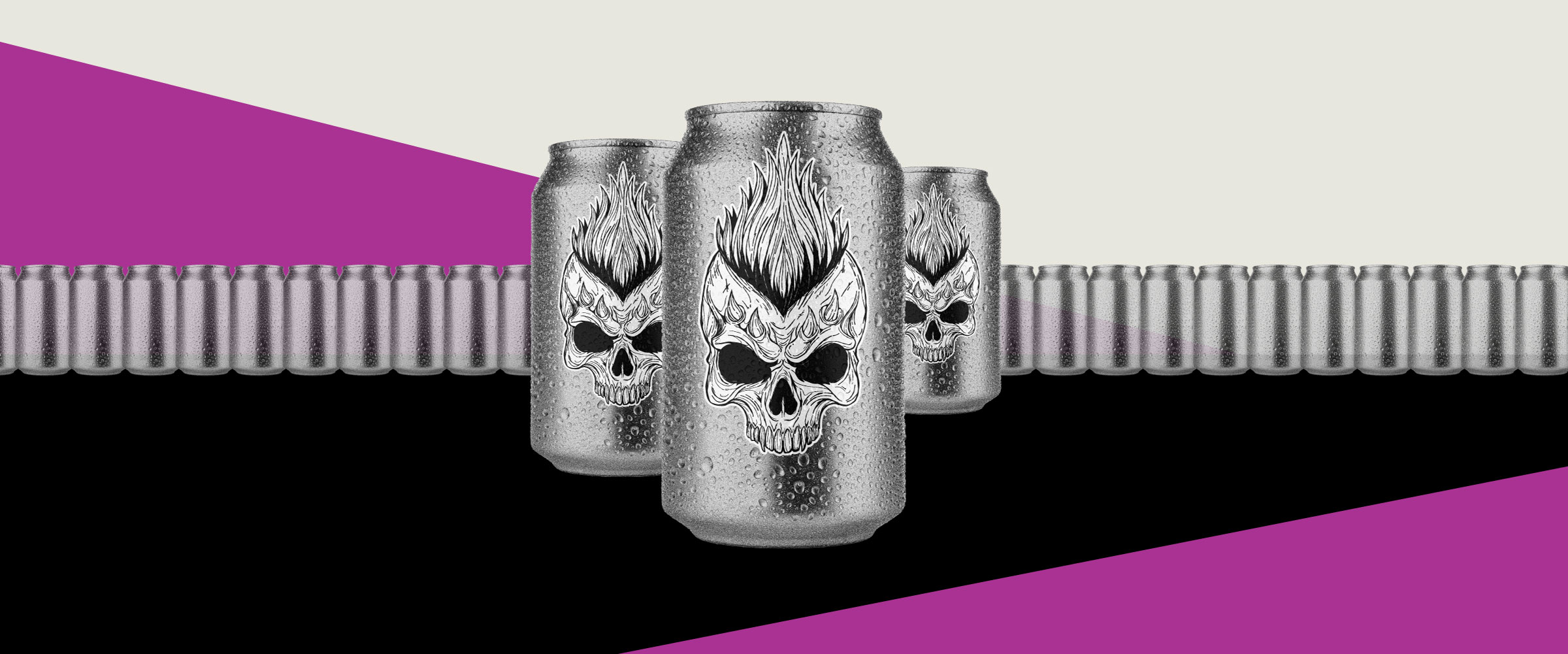
Spring water in a tallboy can wrapped in heavy metal fonts, skulls, flames, and a tagline that doesn’t pitch wellness or purity, but promises, quite simply, to “Murder Your Thirst.” At first glance, it looks like satire. A nihilistic prank from the creators of Jackass, perhaps. It’s not. It’s an executive masterclass in modern brand strategy. This brand didn’t just launch a product. It waged war on an entire category. And it won.
The brand is Liquid Death, and it won by turning the core assumptions of a category against themselves. It didn’t outcompete bottled water brands on features, benefits, taste, or purity. It exposed the entire genre as tired, hollow, and culturally irrelevant.
Welcome to the age of de-positioning.
The Joke That Was Dead Serious
When Liquid Death first appeared, many assumed it was a joke. A metal-themed water brand? A beverage wrapped in iconography more aligned with Slayer than SoulCycle? But to dismiss it as parody was to miss the point entirely. It was precision. It was positioning with teeth. It was a violent rejection of what bottled water had become: an exercise in sanitized sameness.
For decades, the bottled water aisle has been dominated by brands like Evian, Smartwater, and LIFEWTR—brands that whisper. Their promise is cleanliness, minimalism, balance, and wellness. They lean into aesthetics borrowed from yoga studios, spas, and lifestyle influencers. Liquid Death screamed. It didn’t just reject the prevailing aesthetic—it turned it into a target. And in doing so, it exposed how absurd, fragile, and overengineered the wellness economy had become. It’s still water. But now hydration feels like a punk act.
De-Positioning: The Anti-Playbook
Traditional branding is obsessed with differentiation. It tells us to find a unique value proposition, to carve out a niche. But in hyper-saturated categories, what if the smartest move is to make everything else look irrelevant? That’s the core of de-positioning: attacking the rules everyone else plays by.
Liquid Death understood that the bottled water category wasn’t just full—it was predictable. It made an enemy out of that predictability. It made a punchline out of every soft-spoken campaign promising “clarity,” “hydration,” or “balance.” And by doing so, it elevated itself beyond product. It became a commentary.
Where Evian is something you sip on your way to hot yoga, Liquid Death is something you slam at a hardcore show. The packaging doesn’t just disrupt the visual shelf—it assaults it. And in that aggression is clarity. Every other water brand suddenly looks soft, safe, and vaguely dishonest. This is de-positioning at its sharpest: not selling a better option, but framing every other option as a cultural mistake.
A Brand That Behaves Like a Bit
Liquid Death doesn’t behave like a traditional brand. It behaves like a bit with a marketing budget. Every ad is an anti-ad. Every campaign is a dare. Every product extension feels like a punchline that made it to retail: enema kits, children’s books, fake documentaries, convicted felon spokespeople. The brand isn’t building awareness—it’s building a character. And that’s not an accident.
This is brand-building in the age of meme culture—where consistency of message matters less than consistency of tone. Where irony and absurdity can be more effective than clarity and benefit. Where attention is scarce, and trust is earned through cultural savvy, not corporate polish. Liquid Death is what happens when brand becomes performance art.
Solving a Cultural Pain Point Without the Preach
Every great brand solves a pain point. But Liquid Death didn’t solve a functional one. It solved a cultural one: the fatigue of being marketed to. The wellness industrial complex has become a parody of itself—every beverage promising transcendence, balance, or inner peace. The language of aspiration is now white noise. Consumers—especially Gen Z and millennials—are fluent in this vocabulary. They’ve learned to tune it out. Liquid Death didn’t add another voice. It vandalized the chorus.
“Murder Your Thirst” isn’t a benefit. It’s a statement of rebellion. And that’s precisely why it works. It doesn’t try to sound authentic—it mocks the very idea of authenticity as a branding tactic. It’s an anti-brand that feels more honest than most brands trying to be earnest. By refusing to play by the rules, it builds trust. And trust, in the attention economy, is the most precious currency.
Why Everyone Wants to Copy It—And Why Most Fail
Predictably, Liquid Death’s success has triggered a wave of imitators. New CPG brands now clamor for irreverence. They want irony. They want edge. They want to “do a Liquid Death.” But most fail. Why? Because they mimic the style, not the strategy. Liquid Death’s irreverence isn’t random. It’s deeply strategic. It understands what it’s mocking. It understands the cultural backdrop. It’s not just about being funny—it’s about being pointed. It breaks the rules that matter. It breaks the rules that define the category. Too many brands try to be shocking for its own sake. But de-positioning isn’t about shock value. It’s about contrast. Discipline. Knowing what to reject—and why. Liquid Death didn’t just pick a fight. It picked the right fight.
The Real Lesson for Brand Builders
In an era where differentiation is harder than ever, where innovation is quickly copied, and where customer attention is fragmenting by the minute, Liquid Death offers a more dangerous—and more effective—lesson. Sometimes the smartest move isn’t to build a better mousetrap. It’s to burn down the idea of traps altogether.
This isn’t just a clever campaign or a viral stunt. It’s a fundamental reframing of what a brand can be: not a set of features and benefits, but a weaponized perspective. A cultural lens. A permission structure for people to say, “I’m with this.” Liquid Death didn’t grow by being a better beverage. It grew by being a better story. And that’s the opportunity for every brand right now. Don’t just add to the noise. Make the noise look stupid.
Don’t just compete. De-position. Because in crowded markets, clarity doesn’t come from saying more. It comes from making everyone else look confused. Liquid Death didn’t just murder thirst. It murdered the market. And that might be the most refreshing thing bottled water has ever done.



